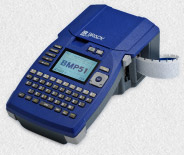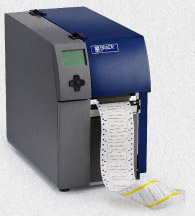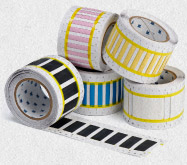Brady's DfE Indicators and Example Products
In 2012, Brady completed a pilot process of the DfE program and tools that led to updating the sustainability indicators. The pilot tested Energy Use, Materials of Concern, Materials Source, Material Consumption, and End of Life Waste as key environmental indicators for Brady products. The pilot demonstrated that Materials Source and Material Consumption were highly correlated and therefore measuring these individually indicators did not produce meaningful results. Both the indicators are more accurately demonstrated as an environmental metric when measured by a life-cycle metric like Carbon Footprint. The design strategies of reducing material, lightweighting, and choosing more sustainable materials sources are still strategies of DfE; however, the outcomes of these strategies are measured in a common unit of carbon footprint.
| DfE Indicators | Description | Metric |
|---|---|---|
| Energy Use of Product |
Energy consumed by printer systems during use or standby. |
% MJ (megajoules) decrease in energy use while in Active State, Ready State, Off Mode, Sleep Mode or Standby. |
| Materials of Concern |
Materials for which there is evidence for probable serious effects to our health and/or the environment. |
% decrease by mass of materials of concern in the product. |
| Carbon Footprint |
Improvement in overall life-cycle footprint, measured in carbon equivalence. |
% decrease in CO2-equivalence. |
| Consumer Waste |
Waste sent to landfills during the life cycle of the product. |
% decrease in waste sent to landfill. OR % decrease in product use or end of life impact. |
The table below displays examples of products that have achieved improvements in the indicators outlined above. As the DfE Program is implemented, all new products will apply tools that evaluate the opportunity to improve these metrics in new product development.
| Product Examples | Product Image |
|---|---|
BMP 51 and BMP 53 Label Makers
|
 |
Permasleeve® ZH
|
 |
ReForm® Sorbents
|

 |
PermaSleeve® Global Sleeve Liner
|
 |


